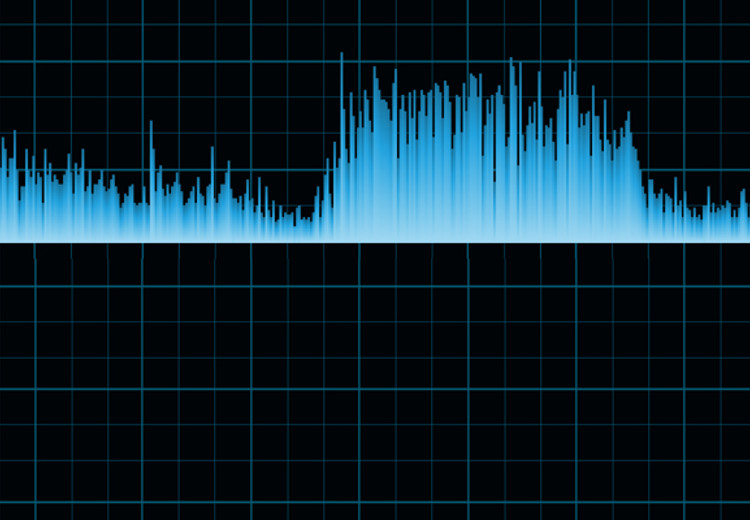Passenger cars
European car sales on the up
05 March 2024
13 April 2016
It all starts with the data

Low-speed pre-ignition is not a new phenomenon. But, the increased use of downsized and turbocharged gasoline direct injection engine technology means it has become more of a concern. Insight looks at how the careful collection and analysis of LSPI data could be used to help in its control.
Low-speed pre-ignition (LSPI) is an abnormal combustion event, which has been observed at low engine speeds in the new generation of smaller, turbocharged, gasoline direct injected engines.
Characterised by spontaneous ignition of the fuel that starts before the spark is generated, LSPI creates a downward force and exerts peak pressures that often exceed 100 bar. At high loads, where the engine is knock-limited, this advanced phasing results in very strong knock, which is often associated with significant audible events.
The most severe cases of LSPI can result in damaged pistons, broken piston rings and bent connecting rods.

The increase in the use of downsized and turbochargedgasoline direct injection engines means LSPI is more of a concern
In the first Insight LSPI article we examined the fundamental issues behind LSPI and explored the need for an engine test to measure the effects of lubricant composition on the occurrence of LSPI.
In the eleven months since the article’s publication there has been a considerable amount of activity in the industry to develop a meaningful LSPI test.
Precision matrices are underway on a new ASTM LSPI test, which will be included in the ILSAC GF-6 specification. However, delays in other test developments mean that the ILSAC GF-6 first allowable use date, currently set for April 1 2018, could slip by several months.
Infineum, over the same period, has continued its own research into the influence of lubricants and fuels on the occurrence of LSPI. In addition it has been looking for ways to help eliminate, or at least control, these unpredictable and highly undesirable events.
In our view, this activity is becoming increasingly important as OEMs intensify their efforts to improve fuel efficiency and reduce CO2 emissions from their gasoline engines.
This drive to improve fuel economy means we can expect smaller, turbocharged, gasoline direct injected engines to be deployed more widely in all the key markets of the world in the coming years. The latest generation of these engines will be designed for increased power density – making them increasingly susceptible to LSPI.
OEMs can introduce engineering solutions, such as cooled exhaust gas recirculation, increased crevice volume and higher ring tension, to help inhibit LSPI.
However, their cost represents a sacrifice in on-the-road fuel economy through timid engine management strategies, increased weight and/or increased material costs.
OEM approaches to addressing and suppressing LSPI differ, but engine management systems can be configured to avoid frequent incursions into the low speed, higher brake mean effective pressure zone of operation, where LSPI is more likely to occur.
Although relatively infrequent, when LSPI does occur it can be catastrophic. In the worst cases it can result in cylinder head failures and cracked piston lands and skirts.
In our view, the key step in investigating the fuel and lubricant effects of LSPI is to define a precise and repeatable method for collecting and analysing the data. However, the disruptive nature and random occurrence of LSPI means this is not an easy task.
To examine the impact of different lubricant formulations Infineum devised a test programme using a General Motors engine, which was run on an industry standard fuel at Southwest Research Institute. The LSPI test consists of six segments: four at higher speed and load conditions, and two at lower speed and load conditions. All speeds were 2,000 rpm or lower to simulate the conditions that would generate sufficient LSPI events, while causing minimal damage to the engine and instrumentation.
Each LSPI test consists of four runs of 150,000 cycles and, for each cycle, data is collected at 0.5° crank angle resolution to provide adequate combustion analysis without creating an exceptionally large data file. The data consists of peak pressure, crank angle at 2% mass fraction burned, cycle number and engine cylinder.
At the end of each four hour run, approximately five gigabytes of measured and calculated data is generated for analysis.
The Infineum definition of LSPI in this study, is outliers of peak pressure and/or crank angle at 2% mass fraction burned that exceed 4.7 standard deviations. Also, an LSPI event, is one in which there are more than three ‘normal’ cycles both before and after each event.
A reference oil is run between every four or five test lubricants to ensure rigorous interpretation of data. Over the testing period the most frequently used reference oil generated more than 31,000 LSPI events. This data was used to quantity the precision of the engine test and allowed rigorous interpretation of the data.
The Infineum study focused on stationary engine test equipment configured to deliberately generate LSPI events, and on the development of a statistically rigorous method to measure and quantify the data generated. Using this approach, consistent results have been obtained across the six test engines chosen for this study.
The baseline oil results obtained, confirm the efficacy of the approach and set the stage for a statistical study of the effects of various lubricant chemistries.
In our view there is a sizable prize for the additive and lubricant suppliers who can minimise LSPI with a well formulated lubricant for a given fuel.
In the next LSPI article Insight will continue to explore this statistically rigorous approach to measuring and quantifying LSPI data. We will examine how it is being used to not only investigate the key effects of the lubricant, but also to identify the components that can quench or exacerbate LSPI. The article will also look at how this statistical approach can be refined for another engine platform that will be part of the upcoming ILSAC GF-6 engine oil standard.
Sign up to receive monthly updates via email